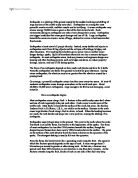An earthquake is a sudden and sometimes catastrophic movement of a part of the Earth's crust.
An earthquake is a sudden and sometimes catastrophic movement of a part of the Earth's crust. Earthquakes result from the dynamic release of elastic strain energy that radiates seismic waves. Earthquakes typically result from the movement of faults, planar zones of deformation within the Earth's upper crust. The word earthquake is also widely used to indicate the source region itself. The Earth's lithosphere is a patch work of plates







